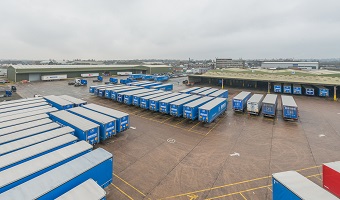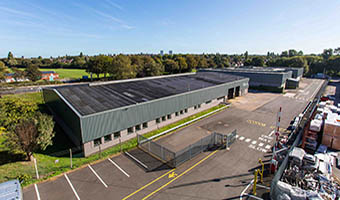With its improving accessibility, increased land supply and competitive pricing, the M40 Corridor is an untapped area of opportunity for national occupiers, investors and developers.
Matt Tilt, associate director of industrial and logistics at Lambert Smith Hampton in the West Midlands, believes investors and developers should now consider opportunities along the northern section of the M40, which begins at the M42 junction near Solihull.
Infrastructure improvements and an improved attitude to B8 development by planners is assisting in unleashing the corridor’s long-term potential.
And he has forecast a strong pipeline of demand in all size ranges within the M40 area, with around three million sq ft of active demand along its length – equivalent to almost three years of average take-up.
Despite these factors, industrial land values along the M40 stand at a notable discount to those of more established markets, offering investors and developers a competitively-priced alternative to traditional core locations.
A new report by LSH – one of the UK’s leading commercial property consultancies - highlights opportunities in various locations around Warwick and Leamington Spa where continued demand is expected from the automotive sector.
Near Banbury and Bicester, additional land could be made available as a result of changes to planning policy; and further south between Oxford and High Wycombe, where there is scope to build smaller units to serve the urban logistics market.
Matt said: “The market has begun to consider the M40 corridor. We believe that the corridor continues to offer a competitively-priced alternative with genuine growth prospects:
“As values in core locations continue to escalate, the M40 represents an untapped area of opportunity that presents a clear strategic proposition for forward-thinking investors to consider speculative development and investment.
“Despite its strategic position, the M40 has until recently been in the shadows of the M4 and M1 routes as a logistics location. However, this perception is changing. Unlike the competing corridors, the pre-let and build to suit market has fared well, with recent deals to The Entertainer, Aston Martin and Prodrive.
“Three key factors are coming together which have the potential to transform the route to a prime location for industrial and logistics for occupiers and investors.”
1. Accessibility is improving.
The M40 is a vital route between the UK’s two largest conurbations – London and the West Midlands - with over half of the population within 100 miles of its central point. Recent, current and planned road improvements are enhancing accessibility.
2. Increased land supply
The M40 corridor has seen relatively limited industrial and logistics development. However, a recent relaxation in planning restrictions coupled with the growing scarcity of development land elsewhere represents a clear opportunity for developers.
3. Discount to established markets
Prime rents in the lower section of the M40 are essentially half the cost of London. Similarly, towards the north of the M40, prime rents are at a discount to Birmingham, albeit to a lesser extent.
More significantly, however, industrial land values in the M40 continue to stand at a notable discount to those of the more established markets. This presents a clear strategic opportunity for investors and developers to consider speculative development.
Located to the south east of Birmingham, the upper section of the M40 corridor encompasses Warwick, Leamington Spa and Wellesbourne. On average it accounts for 23% of take-up along the M40, with annual take-up averaging around 270,000 sq ft over the past five years.
This area has long been successful at attracting major car manufacturers as well as many part suppliers. Given the recent boom in production within the automotive industry, LSH expects this to continue. Key occupiers include Jaguar Land Rover, Aston Martin Lagonda, Wolseley, Volvo, Rexel UK Ltd, Premier Ink, Longlife and Amethyst.
Popular locations include Wellesbourne Distribution Park, Titan Business Centre, Tachbrook Park, Budbrook Road Industrial Estate, Sydenham Industrial Estate, and Heathcote Industrial Estate.
Investor perceptions of the M40 corridor as a key industrial and logistics location have been transformed, as road infrastructure improvements and more relaxed planning have begun to unleash its long-term potential.
“With the investment market focusing heavily on traditional core locations, investors are now seeking value – we believe that this corridor offers a competitively priced alternative with positive growth prospects.
“The volume of investment activity in UK industrial and logistics property has been at near record levels over the past 12 months, reflecting the weight of money in the market and positive attributes around the sector relating to supply and structural change. The first half of 2015 was also very active for the M40 corridor with volume of £94.3m, up 90% on the same period in 2014 and surpassing the annual total for each of the previous three years.
“H1 2015 volume was boosted by one of the largest deals seen on the M40 on record, namely Griffen UK Logistics’s £43.6m purchase of Wellesbourne Distribution Park, Warwick from Barwood Capital and JP Morgan.
“It is notable that the purchaser of Wellesbourne Distribution Park was a South African investor, demonstrating the appeal of the M40 to a broad range of investors, including overseas buyers,” added Matt.
REGISTER FOR UPDATES
Get the latest insight, event invites and commercial properties by email






